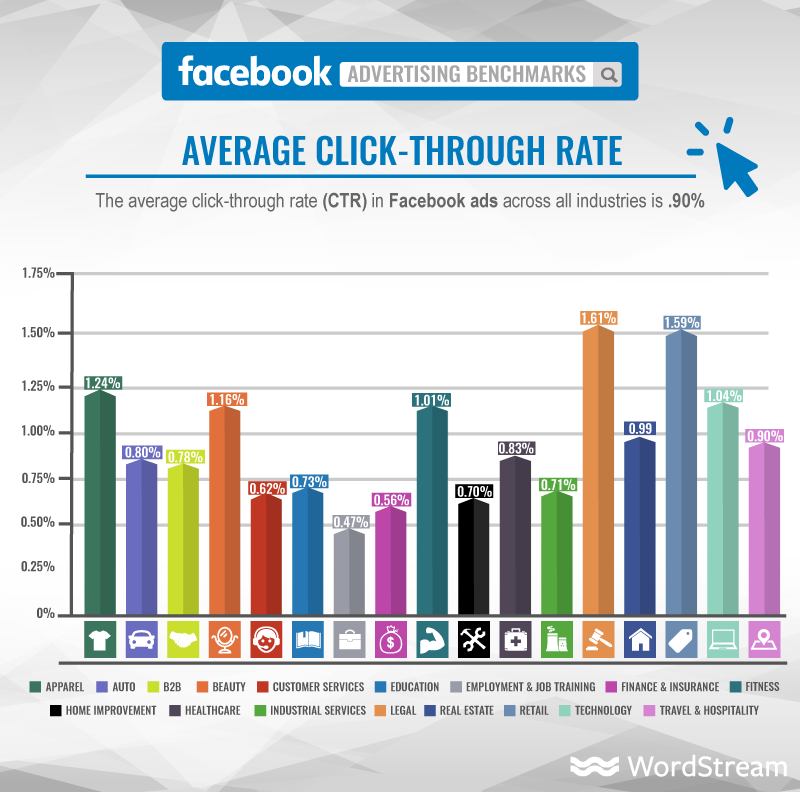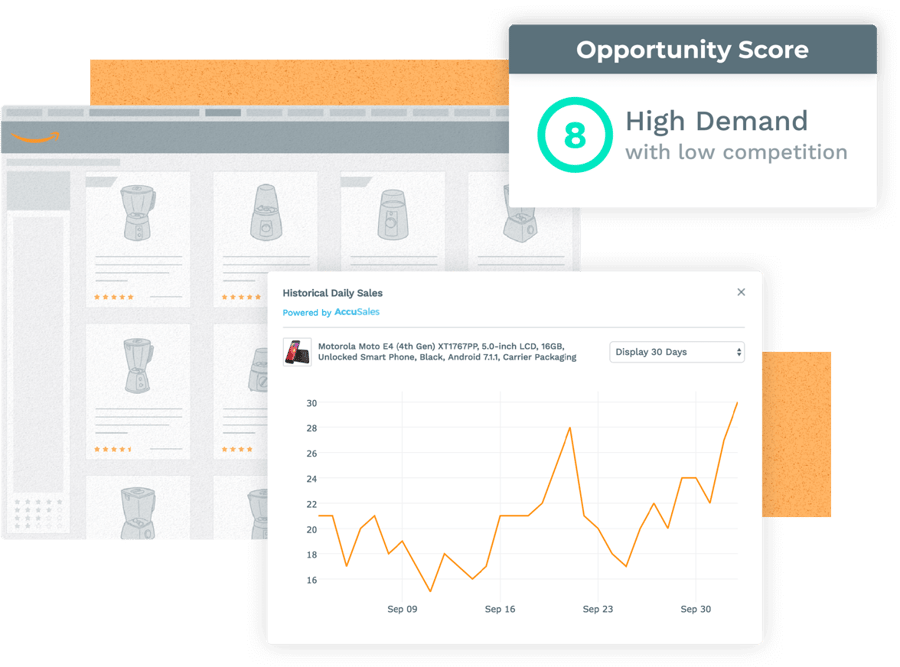
Whether you're starting a new business or building upon an existing one, at some point, you will have to start selling a new product or service. Doing so, however, is risky because it's hard to tell for sure how they will be received until after you've done all the hard work.
This raises a big question. How do you mitigate risk when trying something new? In this post, we'll focus on how you can estimate demand for new product ideas and improve your odds of a successful product launch.
The Importance of Estimating Demand
It would be nice to be able to debut products and simply "see what happens." Unfortunately, businesses can seldom afford to act that way, so it's important to try to estimate demand in advance.
Demand estimation benefits businesses in a lot of different ways. First and most importantly, estimating demand gives you a chance to avoid debuting products that nobody wants. In order for any product to sell, it needs to fit a specific market's needs. This principle is known as product-market fit.

Suffice it to say, if you don't find evidence of product-market fit, you can avoid spending time researching, developing, and marketing a bad product. This is one of the best ways to keep a business, in general, profitable and focused.
Let's say you have an affirmative answer to the question of "do people want it in the first place?" Even if you clear this hurdle, you want your demand estimation to be accurate. That way, your sales forecasts will be accurate too. That means you will spend the correct amount on marketing, sales, staffing, and more.
Supply chain management is a big part of this as well. If you have an accurate estimate of demand, you can manufacture and store the right number of products. You can also make sure that you have a way to get items into your customers' hands, which is order fulfillment.
Taken all together, being able to accurately estimate demand gives you a chance to put the right business processes in place so you can have peace of mind.
Data You Can Use to Estimate Demand for New Products
Using the discussion in the prior section, we can summarize demand estimation as having three big goals:
- Make sure there is enough demand to pursue product development.
- Estimate how much demand will change based on marketing.
- Figure out how many products to manufacture and store.
With that in mind, the next natural question is "what kind of data can be used to answer these questions?" There are many sources of data and what's appropriate will differ based on your industry. Here is a list of ideas to get you started.
1. Use past sales for similar products.
If you're looking to estimate the amount of sales you will get by releasing a new product, one of the best places to start is by looking at your existing products. For example, if you are a board game publisher and your last three games sold between 3,000 and 4,000 copies, then it's pretty reasonable to expect that your next game would fall into this same range as well.
This is a really good source to account for the quirks of your particular situation. There are obvious drawbacks, though. For one, if you're launching your first product, you can't use past sales data. For another, if you plan on spending much more on marketing, or your strategy is very different, then you can't rely as much on prior data.
2. Use data from your PPC ads.
As many as 45% of small businesses use pay-per-click (PPC) advertising such as Google ads. It makes sense, too. Not only is it effective, but you can also scale your spending up or down based on your marketing budget.

If you are already using PPC ads to sell products, you can look at the cost per conversion on ads you already run. If it takes you $25 to get a sale on an existing $100 product, then – if your product is similar enough – it could be sensible to assume the same principle will apply to a new product.
The benefit of using PPC data in demand estimation is because it allows you to forecast different scenarios based on different marketing budgets. After all, if you know the cost per conversion for your ads, you can estimate how many conversions you’ll have given a certain amount of spending. It's not perfect, but taken with other data, this can be very insightful!
3. Use industry benchmarks for ads.
If you're not already running ads for similar products, you can still use industry benchmarks to estimate what it will cost to generate a sale. For example, if you are advertising on Facebook, you can use data provided by companies like Wordstream to estimate how much it will cost for you to generate a lead.
 Source: WordStream
Source: WordStream
You need a working knowledge of digital advertising to use this information to estimate product demand. However, here is a simplified example:
Assume your Facebook ad has a cost per click (CPC) of $2. Also assume that people have a 10% chance of purchasing your product after landing on your page. Based on these assumptions, you can estimate that for every $20 you spend, you will receive one sale. This can help you to approximate how many units you can sell based on your advertising budget and no other marketing initiatives.
4. Use publicly available market data.
Speaking more generally, if you want to investigate an industry as a whole, there are tons of great sources of data available online that you can look at. Here are several excellent resources which you can use:
- The Small Business Administration: An agency in the United States that provides a wide variety of information and educational resources.
- The Bureau of Labor Statistics: Part of the United States Department of Labor. They provide economic statistics that you've likely heard on the news, such as the unemployment rate, Consumer Price Index, and Consumer Expenditure Survey.
- Pew Research Center: Conducts “public opinion polling, demographic research, content analysis and other data-driven social science research."
- Statista: Provides a variety of marketing statistics for nearly any industry you can think of.
- City Town Info: Provides detailed demographic information based on region such as income, educational attainment, and so on.
- Google Trends: Shows who is Googling based on their geographic location.
- Social Mention: Ideal for finding out how much people talk about certain subjects and whether they view them positively or negatively.
5. Look at Amazon sales data.
Using tools like JungleScout, you can look up virtually any item on Amazon and see how much monthly revenue the sellers make. By finding five or six products that resemble the product you want to create, you can get an idea of just how much money you can make in a given category.
 Source: JungleScout
Source: JungleScout
Be careful when using Amazon sales data, though. Sales revenue is often dependent upon marketing budget. If you use JungleScout to find sales data, try looking up the companies who sell products online too. See if you can figure out whether they do a lot or a little marketing.
6. Use surveys and focus groups.
You can look at statistics all day, but ultimately, products need to serve people's needs and wants. That means at least some of your marketing research needs to involve asking individual customers for the opinions. You can do this by creating surveys and giving people a reason to fill them out. Another way to solicit individual opinions is by conducting focus groups.
7. Ask sales staff and experts.
Lastly, it's a good idea to solicit the opinion of sales staff and experts who are familiar with the type of product you are creating. Often, they can provide useful context to the data you have found and the opinions you have heard from customers. To make the most of expert advice, you should first do your own research before reaching out so that you can have a productive conversation.
Creating Demand Estimation Scenarios
At this point, with all the data you've gathered, you need to create sales projections. This is important because it will help you to predict both the amount of revenue and expenses you can expect, as well as the supply chain demands.
Let's just get this out of the way to start with: even if you create a very sophisticated sales projection model, it's still, to some degree, guesswork. You need to be able to test whether or not your assumptions are true, so I strongly recommend you follow a few basic housekeeping rules:
- Write down all your assumptions as clearly as possible.
- Define your variables. This can include data like marketing budget, conversion rate on advertising, market growth, and other factors.
- Define your hypothesis. State what you expect to happen.
- Test as many of your assumptions and hypotheses as possible.
With these rules clearly defined, now you can create a sales projection model based on variables having different values. Start by creating a worst-case and best-case scenario based on conservative and optimistic assumptions respectively. Worst-case scenarios may involve a limited marketing budget, low conversion rate, or low profit margins. Best-case scenarios may involve the opposite.
Next, create multiple in-between scenarios. I recommend putting scenarios side-by-side in a spreadsheet so you can see how profits look given the outcome of certain assumptions.
Making Sure Your Demand Estimation Scenarios Make Sense
Exactly what your projections will look like depend on your inputs: the quality of your product, its price, the cost to manufacture, your marketing budget, and so on. No matter what, though, you can use previously gathered data as a sanity check, if nothing else.
First and most important, you must ask yourself: do sales staff, experts, surveys, and/or focus groups indicate there is a genuine interest in the product you want to make? If the answer isn't a clear "yes", it's a red flag that you're missing something that no amount of number-crunching can help you with.
If you pass that test, here are a few more questions to ask:
- Are your projections inconsistent with sales data for similar products on the market?
- If you've sold similar products before, are your projections dissimilar to your real sales data?
- Do your projections count on your product being uncommonly likeable (that is, having a higher conversion rate than industry benchmarks or your own ads suggest)?
If the answer to any of the above questions is "yes," that doesn't mean your projections are automatically bad. You just need to have a clear, well-stated reason for this.
Final Thoughts
Launching a new product means taking a leap into the unknown. There's no avoiding that! But you can reduce unnecessary risk by carefully considering what your target market needs and wants.
Is there existing demand for the product you want to sell? If so, can you prove it with numbers? Ask yourself these questions and answer them in a rigorous way, and you're that much closer to a successful product launch!





Leave a reply or comment below